In the intricate world of pharmaceuticals, cosmetics, and various scientific applications, the humble vial plays a crucial, often unsung, role. These small, sealed containers are the silent guardians of valuable substances, ensuring their integrity and safe delivery. For manufacturers of packaging and vial filling machines, a deep understanding of vials is paramount. This comprehensive guide delves into the diverse types of vials, explores the fascinating processes behind their creation, and highlights their essential uses across numerous industries.
Unlocking the Secrets of Vials: A Comprehensive Guide to Types, Processes, and Essential Uses (Featuring Vial Filling Insights)
The term “vial” often conjures images of small glass bottles, and indeed, this is their most common form. Historically, a specific type of vial, known as a “penicillin bottle” or “serum bottle,” gained prominence due to its widespread use in storing penicillin. This type of vial, commonly referred to as a “vial” in a broader context, is typically sealed with a rubber stopper and an aluminum-plastic combination cap. These vials come in various forms, including clear and amber varieties, and are frequently paired with butyl rubber stoppers and aluminum-plastic caps for optimal sealing. While various materials are used, borosilicate glass vials dominate the market, particularly for critical applications.
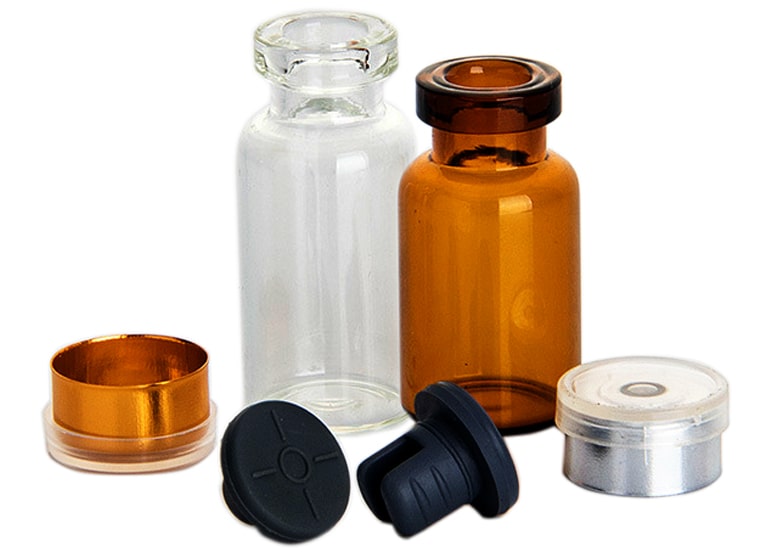
What Exactly is a Vial? More Than Just a Bottle
At its core, a vial is a small, closed container, typically made of glass, designed to hold liquid, powder, or granular substances. While seemingly simple, the design and material of a vial are carefully chosen based on the specific requirements of its contents. One of the most common and historically significant types of vials is the “vial” itself, often referred to as a “penicillin vial” due to its early and widespread use for packaging penicillin.
These vials are characteristically sealed with a rubber stopper and a combination aluminum-plastic cap. This robust sealing mechanism is crucial for maintaining sterility and preventing contamination, especially for sensitive pharmaceutical products. While transparent vials are widely used, brown vials offer essential protection for light-sensitive substances, preventing degradation caused by exposure to UV rays.
The dominance of borosilicate glass in the vial market is a testament to its superior chemical stability and resilience. However, depending on the application and required level of inertness, other glass types, such as soda-lime glass, are also utilized, albeit for less sensitive contents.
The Art and Science of Vial Manufacturing: Molded vs. Tubing Vials
The journey of a vial from raw material to finished container is a fascinating process, primarily categorized into two distinct methods: molded and tubing. Understanding these processes is crucial for appreciating the differences in vial characteristics and suitability for various applications, particularly when considering vial filling machinecompatibility.
Tubing Vials: Precision and Transparency
The production of tubing vials begins with the creation of glass tubes. These tubes are then fed into specialized vertical rotary machines that heat and shape them into the desired vial form. A key characteristic of the tubing process is its reliance on only two sets of mold wheels during shaping, as opposed to a complete mold set. This streamlined process contributes to the inherent advantages of tubing vials.
From an aesthetic standpoint, tubing vials are known for their superior clarity and a more polished, uniform appearance. This is directly linked to the manufacturing process, which minimizes surface imperfections. Beyond aesthetics, tubing vials boast thin and uniform walls, facilitating efficient heat transfer – a critical factor in applications involving sterilization or temperature-sensitive substances. This combination of transparency and excellent chemical stability makes tubing vials the preferred choice for a wide range of high-value and sensitive products.
Molded Vials: Robustness and Accessibility
In contrast to the tubing process, molded vials are produced using a more traditional method involving melting raw materials like soda ash and silica sand in a kiln-row machine. The molten glass is then poured into a complete mold set, where it takes its final shape. This process, while different from tubing, yields vials with their own distinct characteristics.
Molded vials often have a slightly rougher surface finish compared to their tubing counterparts. The material commonly used for molded vials is soda-lime glass. While this material is more readily available and cost-effective, it exhibits lower chemical stability compared to borosilicate glass. Consequently, molded vials are frequently employed for less sensitive substances, such as veterinary medications, where the stringent chemical inertness of borosilicate glass is not strictly required. The presence of a rigid mark on molded glass bottles, dictated by the mold shape, is another visual distinction from tubing vials.
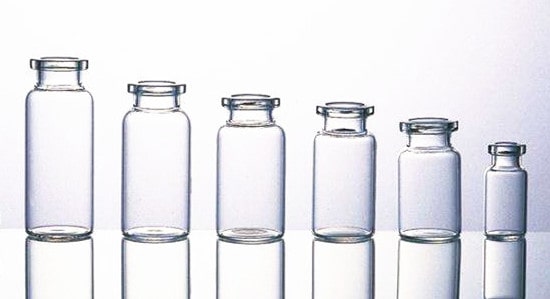 |
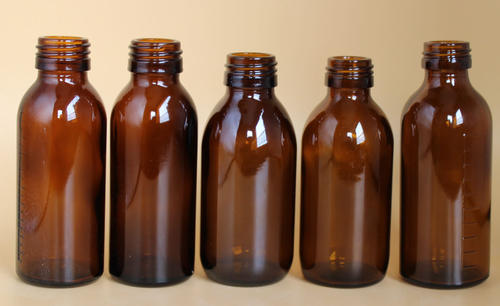 |
Material Matters: The Borosilicate Advantage
The choice of glass material is perhaps the most critical factor determining a vial’s suitability for a specific application. While soda-lime glass finds its place in molded vials for certain uses, borosilicate glass reigns supreme in the realm of tubing vials, particularly for pharmaceutical and biological products.
Borosilicate glass is characterized by its high boron trioxide content, which imparts exceptional chemical stability, thermal shock resistance, and low linear expansion coefficient. Within the borosilicate family, we find low-borosilicate glass and neutral borosilicate glass.
Neutral borosilicate glass represents the pinnacle of chemical inertness and is the material of choice for packaging high-value pharmaceuticals such as serums and lyophilized powders. However, its higher cost and dependence on imported glass tubes contribute to its lower prevalence compared to low-borosilicate glass in certain markets.
Low-borosilicate glass, while not offering the same level of inertness as neutral borosilicate, still provides significantly better chemical stability than soda-lime glass. Its widespread availability and more favorable cost-effectiveness have made low-borosilicate glass vials incredibly popular, holding a dominant market share, particularly in the Chinese domestic market, where they account for over 95% of vial usage. The brown variants of these vials are specifically crafted from low-borosilicate glass using the tubing process to provide essential light protection.
Transparent vials, on the other hand, are typically produced from silica sand as the primary raw material. Melted at high temperatures with other auxiliary materials, the liquid glass is injected into molds, followed by cooling, cutting, and tempering. This process results in glass with a small linear expansion coefficient, low dispersion, excellent chemical stability, high thermal stability, and good electrical insulation. These properties make transparent vials ideal for packaging oral liquids, allowing for visual appeal and ensuring product integrity.
Sealing the Deal: Ensuring Product Safety and Integrity
The effectiveness of a vial is intrinsically linked to its sealing mechanism. A secure seal is paramount for preventing contamination, preserving product potency, and ensuring the safety of the end user. While the general principle involves a stopper and cap, the specific components and design vary depending on the vial type and intended use.
Vials commonly utilize a combination of components to achieve a robust seal. These can include threaded plastic caps, butyl rubber stoppers, silicone stoppers, or PE stoppers. Butyl rubber stoppers are particularly favored in pharmaceutical applications due to their inertness and excellent sealing properties. Silicone stoppers offer flexibility and good sealing, while PE stoppers provide a more economical option for less demanding applications. The aluminum-plastic combination cap provides the final layer of protection, crimped around the vial’s neck to secure the stopper in place.
For applications requiring the administration of substances via injection, such as vaccines and biological agents, the rubber stopper is designed to be easily pierced by a needle while still maintaining a hermetic seal after withdrawal. This necessitates a careful balance between penetrability and resealing capability, a key consideration for vial filling machines that handle these sensitive products.
Vial vs. Ampoule: Understanding the Distinctions
While both vials and ampoules serve as containers for various substances, they possess distinct characteristics that dictate their suitability for different applications. Understanding these differences is crucial for selecting the appropriate container and the corresponding vial fillingor ampoule filling equipment.
Material and Sealing:A primary distinction lies in the material and sealing. Ampoules are typically made from hard glass and sealed by melting the glass neck closed, creating a fully sealed, tamper-evident container. This “melted” seal provides superior long-term stability, but requires breaking the glass neck to access the contents. Vials, as discussed, primarily utilize stoppers and crimped caps, offering a more convenient opening mechanism. While both utilize glass, vials lean heavily towards low-borosilicate glass, while ampoules often utilize hard glass.
Appearance and Neck Design:The visual difference is quite noticeable. Ampoules feature a long, slender neck that tapers to a point, designed for easy breaking. Vials, on the other hand, have a wider, flatter opening with a distinct neck that is thinner than the body but wider than the opening itself. This design is specifically optimized for accommodating a stopper and cap.
Application Differences:The unique bottle neck design of vials makes them particularly well-suited for packaging powders and granular materials, offering greater stability for these forms compared to the narrow opening of an ampoule. Ampoules, due to their full sealing and glass-breaking access, are commonly used for single-dose liquid medications, ensuring sterility and preventing multi-dose contamination. Vials, with their easier access, are more versatile and used for both liquid and solid formulations, including multi-dose vials.
Opening Mechanism:The most significant functional difference is the opening mechanism. Ampoules require the controlled breaking of the glass neck, often using a scoring tool or a small file. Vials, with their rubber stopper and crimped cap, are accessed by removing the cap and then piercing or removing the stopper, a far simpler and safer process for repeated access (as with multi-dose vials). The availability of specialized crimping machines for vials further streamlines their preparation for use.
The Crucial Role of Vial Filling Machines and Ancillary Equipment
The mass production and efficient utilization of vials necessitate sophisticated machinery. Vial filling machines are at the heart of this process, precisely dispensing the intended substance into each vial. These machines vary in complexity, from semi-automatic systems suitable for smaller operations to fully automatic lines capable of filling thousands of vials per hour.
Modern vial filling machines are engineered for accuracy, speed, and sterility. They often incorporate technologies such as peristaltic pumps, piston pumps, or time-pressure filling systems to ensure precise dosage. For sensitive pharmaceutical products, sterile filling environments are crucial, and advanced filling machines are designed to operate within cleanrooms, often incorporating laminar flow hoods and other sterile protocols.
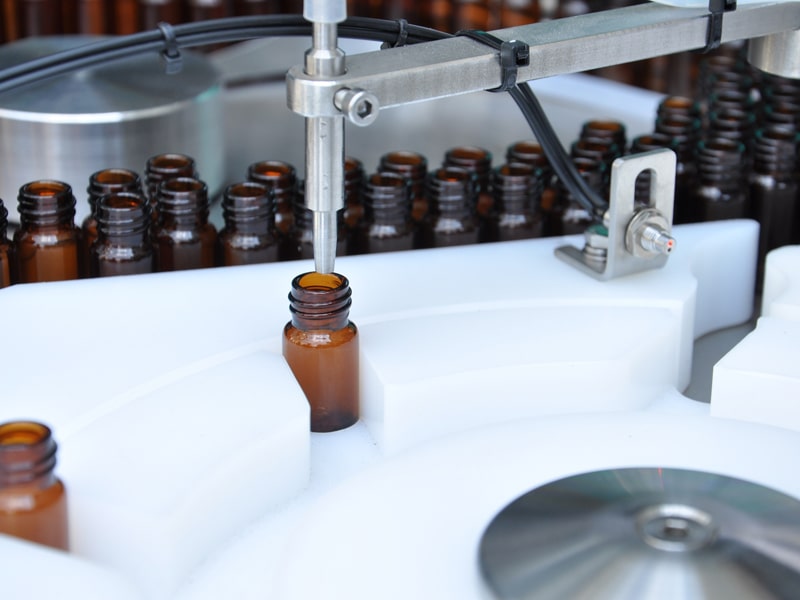
Beyond the filling process itself, other essential equipment is required for a complete vial packaging line. Vial fillingis just one step; before filling, vials must be meticulously cleaned.
Vial Washing Machines: Ensuring Impeccable Cleanliness
The cleanliness of a vial is paramount, especially in pharmaceutical and healthcare settings. Residual particles or contaminants can compromise the integrity of the product and pose risks to the end user. This is where vial washing machines play a vital role.
Driven by the increasing demands for hygiene and efficiency in scientific and industrial environments, automatic vial washing machines have become indispensable. Laboratory cleaning is rapidly evolving towards standardization, automation, and intelligence, making the widespread adoption of these machines a necessity.
The working principle of a vial washing machine is fascinating. They harness the power of ultrasonic energy, converting electrical energy into high-frequency mechanical vibrations. This energy is transmitted into the washing medium within the tank, generating cavitation effects. These tiny bubbles rapidly form and collapse, effectively dislodging and removing dirt and contaminants from both the internal and external surfaces of the vials.
A typical automatic vial washing machine comprises several key components. A transmission mechanism, powered by motors and geared motors, facilitates the movement of vials through the cleaning process. The cleaning tank incorporates ultrasonic generators working in conjunction with larger and smaller water tanks to enhance the cleaning efficacy. A water circulation system, consisting of water pumps and inlet/outlet pipes, supplies the necessary water to the ultrasonic generators and facilitates the washing process. Finally, an electrical control system, often incorporating motor frequency conversion and ultrasonic generator control, ensures the continuous and stable operation of the machine.
Vial Capping Machines: Securing the Seal
Following the filling process, vials require secure sealing. This is the function of vial capping machines. These machines are designed to apply and crimp the cap onto the vial, ensuring a tight and tamper-evident seal.
Vial capping machines are equipped with multiple capping heads, which can be selected based on the size of the vial cap. Prior to full-scale production, trial runs with sample vials are conducted to ensure the correct capping head is chosen and the crimping pressure is appropriately set.
If the cap is not sufficiently tight after crimping, adjustments can be made. By unscrewing the locking nut on the capping head and rotating the upper capping head counterclockwise, the crimping force can be increased. Once the desired force is achieved, the locking nut is re-secured.
During the capping process, as the vial cap is pressed firmly against the capping head, three rotating capping blades continuously spin for several rotations. This action effectively crimps the cap tightly around the vial neck. It is crucial to ensure that the motor operates in a clockwise direction for proper crimping.
After the crimping is complete, the operator pushes a handle forward, returning the capped vial to its original position on the tray. This completes the capping process for a single vial. Subsequent vials are then capped by repeating these steps, ensuring efficient and consistent sealing.
Applications Across Industries: Where Vials Make a Difference
The versatility and reliability of vials make them indispensable across a wide spectrum of industries. Their ability to safely contain and protect various substances makes them the preferred packaging solution for critical applications.
Pharmaceuticals:This is perhaps the most prominent application of vials. From life-saving vaccines and biological preparations to lyophilized powders and liquid injections, vials are the standard container. The stringent requirements for sterility, stability, and precise dosage in pharmaceuticals necessitate the high-quality construction and reliable sealing offered by vials, often filled using sophisticated vial filling machines.
Cosmetics:Vials are increasingly used in the cosmetic industry for packaging high-value serums, essential oils, and other concentrated formulations. The aesthetic appeal of glass vials, combined with their ability to protect delicate ingredients from light and oxidation, makes them an attractive choice for premium cosmetic products.
Chemicals and Reagents:In research laboratories and industrial settings, vials are used to store and transport various chemicals and reagents. The inertness of borosilicate glass is particularly important for preventing reactions between the container and the stored substance.
Diagnostics:Vials play a crucial role in diagnostic testing, holding samples such as blood, urine, or other bodily fluids. Their sterile nature and secure sealing are essential for accurate and reliable test results.
Food and Beverage:While less common than in pharmaceuticals, certain high-end food and beverage products, such as flavor extracts or specialty oils, may be packaged in vials for portion control and preservation of quality.
The Future of Vials and Vial FillingTechnology
As industries continue to evolve, so too will the design and manufacturing of vials and the technology of vial filling machines. Innovations in glass manufacturing, including the development of even more inert and durable materials, are on the horizon. Advancements in automation and robotics will further enhance the efficiency and precision of vial fillinglines. The growing demand for personalized medicine and smaller batch sizes will likely drive the development of more flexible and adaptable filling equipment.
Furthermore, sustainability is becoming an increasingly important consideration. Research into recyclable and biodegradable vial materials, as well as energy-efficient manufacturing processes, will shape the future of the industry.
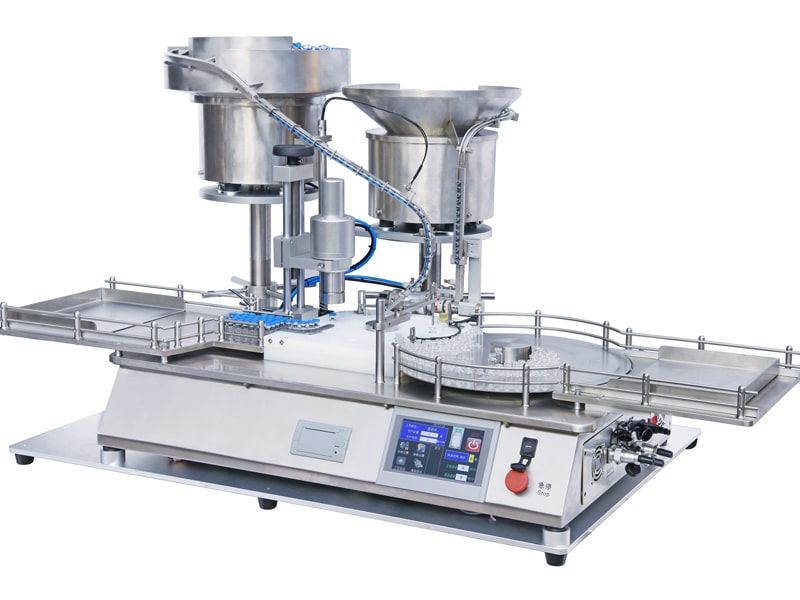 |
Desktop vial filling production line
bottle feeding/stoppering/capping Special small filling production line for vials |
Conclusion: The Vial – A Vital Component in Secure Packaging
From its historical origins as a container for penicillin to its modern-day applications across pharmaceuticals, cosmetics, and beyond, the vial remains a vital component in secure and effective packaging. Understanding the different types of vials – molded versus tubing, clear versus amber – and the materials used in their construction is crucial for selecting the appropriate container for a given product. The intricate manufacturing processes, the distinctions between vials and ampoules, and the critical role of efficient vial filling machinery, capping equipment, and washing machines all contribute to the overall integrity and safety of the packaged contents.
For manufacturers in the packaging and machinery industries, a comprehensive knowledge of vials and the associated processes is not just an advantage – it’s a necessity. By understanding the nuances of vial types, manufacturing methods, and the technologies involved in vial filling and handling, businesses can optimize their production processes, ensure product quality, and meet the ever-evolving demands of diverse industries. The humble vial, though small in size, holds immense significance in the world of packaging, safeguarding valuable products and contributing to global health and well-being.
| References: | |
| 1. | Precision Filling Systems for Pharmaceutical Vials Retrieved from:PDA Journal ; |
| 2. | Container Closure Systems for Packaging Human Drugs and Biologics Retrieved from:FDA Container Closure Systems; |
| 3. | Glass Packaging Institute (GPI) – Technical Standards Retrieved from:GPI Standards; |
| 4. | Pharmaceutical Packaging Report Retrieved from:Grand View Research Report |






Comments